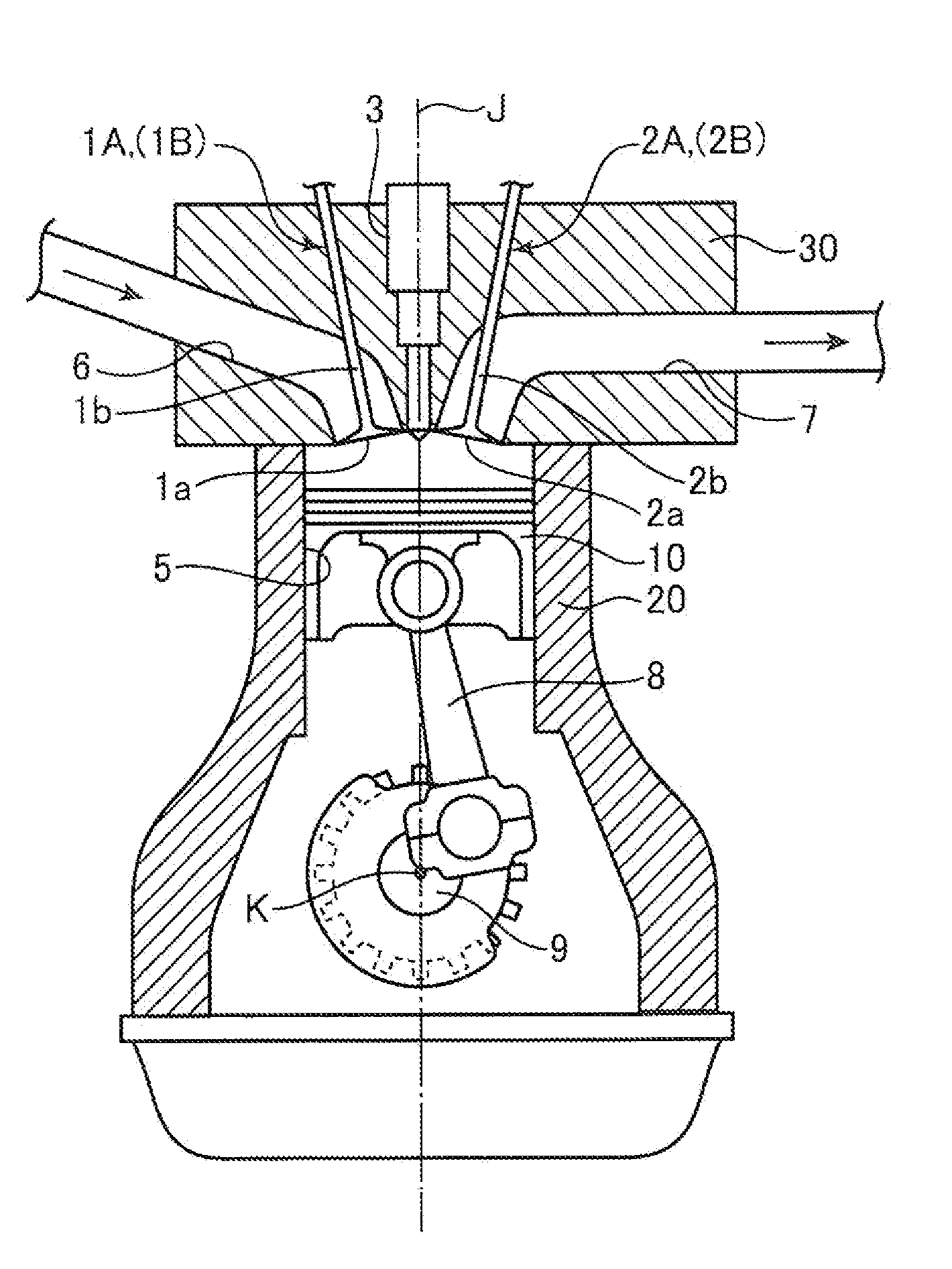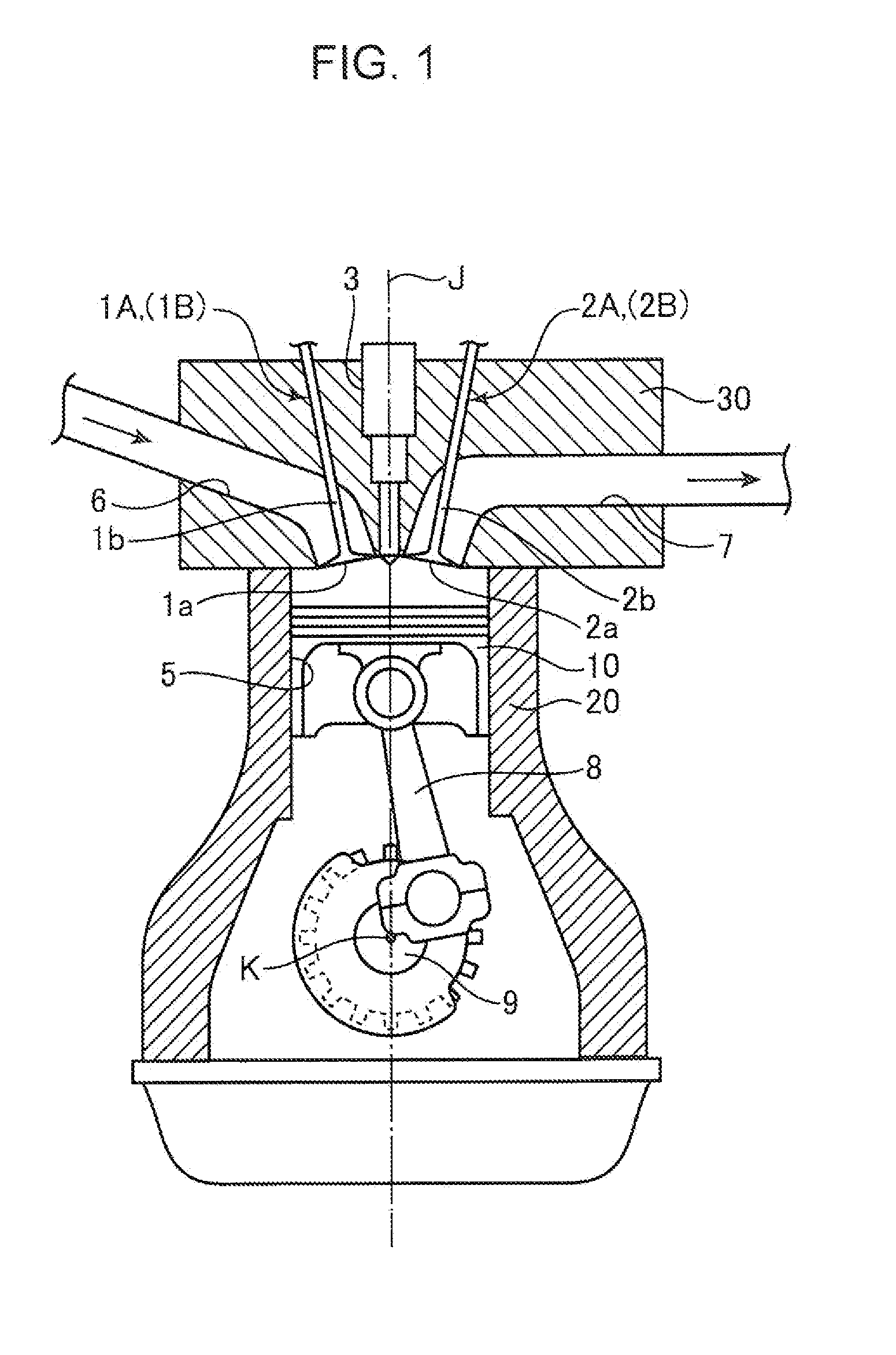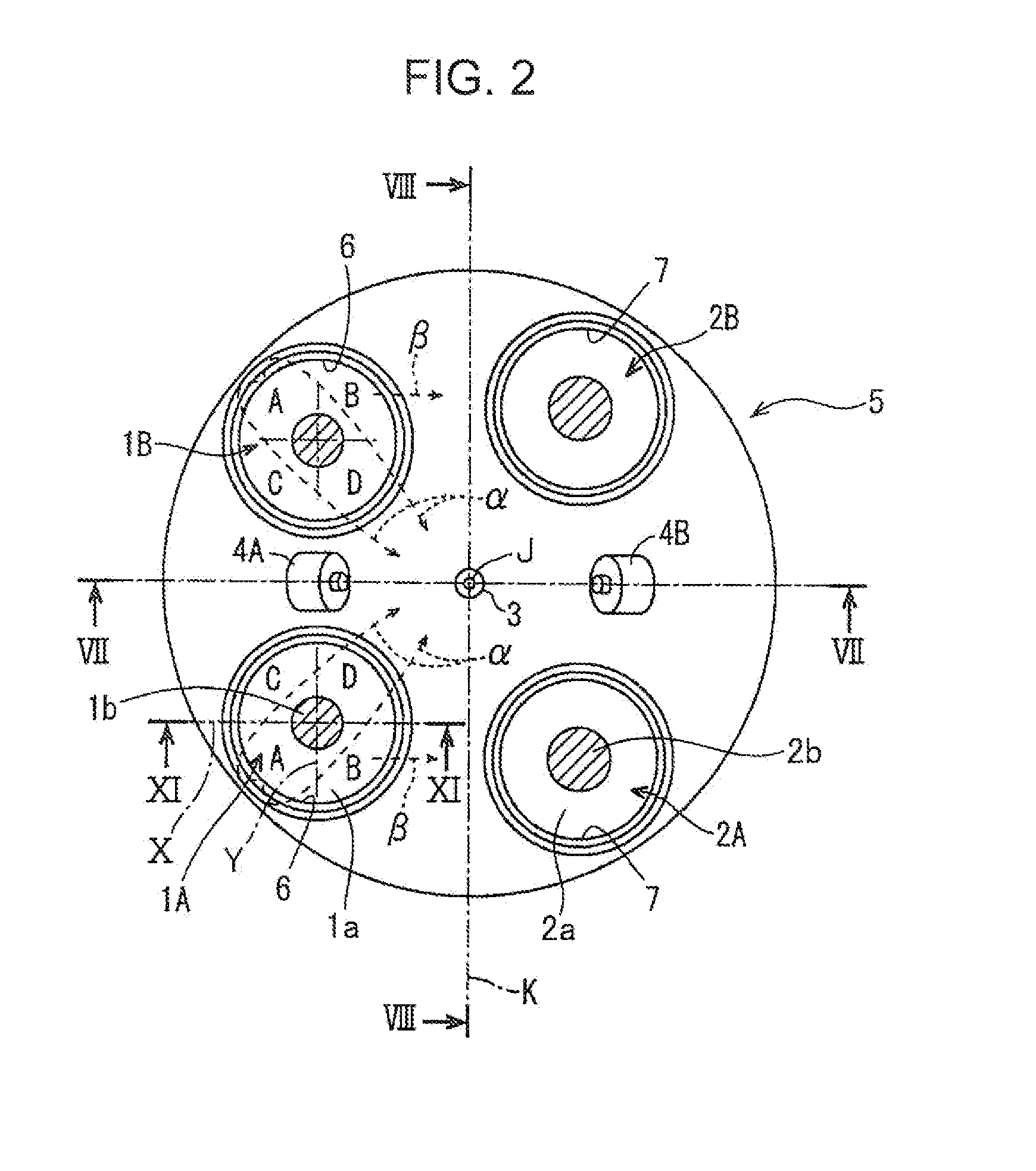Combustion chamber structure for engine
a combustion chamber and engine technology, applied in combustion engines, engine controllers, cylinders, etc., can solve the problems of insufficient scavenging inside the cavity, difficult to form a homogeneous amount of air-fuel mixture inside, and engine with a very high geometric compression ratio, so as to achieve effective increase the effect of filling efficiency
- Summary
- Abstract
- Description
- Claims
- Application Information
AI Technical Summary
Benefits of technology
Problems solved by technology
Method used
Image
Examples
first embodiment
[0041]FIG. 1 shows a schematic configuration of an engine using the combustion chamber structure according to the present invention. The engine shown in the figure is an inline multicylinder gasoline engine to be installed on an automobile and has a cylinder block 20 having a plurality of cylinders 5 (only one thereamong is shown in FIG. 1) arranged side by side in the direction orthogonal to the sheet of this figure, a cylinder head 30 mounted on the cylinder block 20 so as to cover the cylinders 5 from the upper surface, and a piston 10 reciprocatingly inserted into each cylinder 5. A combustion chamber with a volume changing according to the vertical position of the piston 10 is formed above the piston 10. The piston 10 is connected by a connecting rod 8 to a crankshaft 9, and the crankshaft 9 rotates about an axis in response to the reciprocating movement of the piston 10.
[0042]The geometric compression ratio of each cylinder 5, that is, the ratio of combustion chamber volume wh...
second embodiment
[0080]FIGS. 24 to 26 illustrate the present invention. Here, constituent elements same as those of the above-described embodiment are assigned with same reference numerals and the redundant explanation thereof is herein omitted.
[0081]In the second embodiment, the valve recesses 15A, 15B, 16A, 16B are all formed such as to be capable of accommodating almost all portions of the valve heads 1a, 2a of the intake and exhaust valves, more specifically, the portions other than the portions of the valve heads 1a, 2a that overlap the cavity 11. More specifically, the bottom surfaces of the valve recesses 15A, 15B, 16A, 16B are all formed to be flat, and the height thereof is made as a whole slightly less (for example, by 1 mm) than that of the flat surfaces 10a to 10d on the crown surface of the piston 10.
[0082]FIG. 26 shows the cross-sectional shape of the intake valve 1A and the first valve recess 15A corresponding thereto. As follows from FIG. 26, the valve head 1a of the intake valve1A i...
PUM
 Login to View More
Login to View More Abstract
Description
Claims
Application Information
 Login to View More
Login to View More - R&D
- Intellectual Property
- Life Sciences
- Materials
- Tech Scout
- Unparalleled Data Quality
- Higher Quality Content
- 60% Fewer Hallucinations
Browse by: Latest US Patents, China's latest patents, Technical Efficacy Thesaurus, Application Domain, Technology Topic, Popular Technical Reports.
© 2025 PatSnap. All rights reserved.Legal|Privacy policy|Modern Slavery Act Transparency Statement|Sitemap|About US| Contact US: help@patsnap.com



